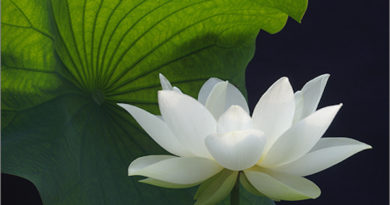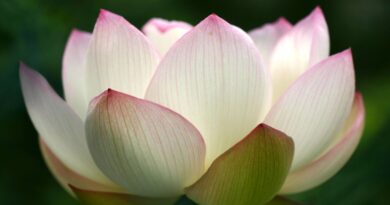THE JHĀNAS AND THE LAY DISCIPLE ACCORDING TO THE PĀLI SUTTAS – PART V: CONCLUSIONS AND AN AFTERTHOUGHT
THE JHĀNAS AND THE LAY DISCIPLE ACCORDING TO THE PĀLI SUTTAS – PART V: CONCLUSIONS AND AN AFTERTHOUGHT
Our study has led us to the following conclusions regarding the relationship between lay noble disciples and the jhānas.
(1) Several suttas describe the process by which a worldling enters “the fixed course of rightness” in a way that emphasizes either faith or wisdom as the chief means of attainment. None of the texts, however, that deal with the two candidates for stream-entry — the faith-follower and the Dhamma-follower — show them as being proficient in the jhānas. Though some suttas include the jhānas in the analysis of the faculty of concentration, this may be done simply out of compliance with the formulaic style of definition employed by the Nikāyas and need not be seen as having categorical implications. The Commentaries treat these definitions as referring to the supramundane jhāna arisen within the supramundane path. Moreover, the analysis of the concentration faculty mentions another type of concentration, which is gained “by making release the object,” and this may be interpreted broadly enough as including degrees of concentration short of the jhānas.
(2) All noble disciples acquire the right concentration of the Noble Eightfold Path, which is defined as the four jhānas. This need not be understood to mean that stream-enterers and once-returners already possess jhāna before they reach stream-entry. The formula for right concentration may imply only that they must eventually attain the jhānas in the course of developing the path to its culmination in arahantship. If we go along with the Commentaries in recognizing the Abhidhammic distinction between the preparatory path and the supramundane path, then we can maintain that the jhānas included in right concentration as a path factor pertain to the supramundane path and are thus of supramundane stature. This still leaves open the question whether aspirants for stream-entry must develop the mundane jhānas in the preliminary phase of their practice.
(3) A number of texts on stream-enterers and once-returners imply that they do not possess the jhānas as meditative attainments which they can enter at will. Though it is obvious that disciples at the lower two levels may have jhānic attainments, the latter are not declared to be an integral part of their spiritual equipment.
(4) Several non-returners in the Nikāyas claim to possess all four jhānas, and according to the Mahāmāluṅkya Sutta, attainment of at least the first jhāna is part of the practice leading to the eradication of the five lower fetters. It thus seems likely that stream-enterers and once-returners desirous of advancing to non-returnership in that very same life must attain at least the first jhāna as a basis for developing insight. Those content with their status, prepared to let the “law of the Dhamma” take its course, generally will not strive to attain the jhānas. Instead, they settle for the assurance that they are bound to reach the final goal within a maximum of seven more lives passed in the human and celestial worlds.
(5) As non-returners have eliminated sensual lust and ill will, the main obstacles to jhānic attainment, they should face no major problems in entering the jhānas. The non-returner is similar to the ordinary jhāna-attainer in being bound for rebirth in the form realm. Unlike the latter, however, the non-returner is utterly free from sensual desire and ill will and thus can never fall back to the sensuous realm.
(6) Although in the Nikāyas the tie between the two attainments — the jhānas and non-returnership — is clear enough, it remains an open question whether the connection is absolutely binding. Several suttas speak of the achievements of non-returners without mentioning the jhānas, and at least one sutta contrasts the non-returner who gains all four jhānas with one who practises more austere types of meditation that do not typically lead to the jhānas.
*
The Commentaries speak even of a sukkhavipassaka arahant, an arahant who has gained the goal entirely through “dry insight,” without any attainment of form-sphere jhāna at all. Although such a type is not explicitly recognized in the Nikāyas, the question may be raised whether the Commentaries, in asserting the possibility of arahantship without attainment of jhāna in the mundane portion of the path, have deviated from the Canon or brought to light a viable possibility implict in the older texts. The famous Satipaṭṭhāna Sutta declares, in its conclusion, that all those who earnestly dedicate themselves to uninterrupted practice of the four establishments of mindfulness are bound to reap one of two fruits: either arahantship in this very life or, if any residue of clinging remains, the stage of non-returning. While several exercises within the Satipaṭṭhāna Sutta are certainly capable of inducing the jhānas, the system as a whole seems oriented towards direct insight rather than towards the jhānas.[40] Thus this opens the question whether the Satipaṭṭhāna Sutta might not be propounding a way of practice that leads all the way to non-returning, even to arahantship, without requiring attainment of the jhānas. This, however, is another question, one that lies beyond the scope of this paper.
-ooOoo-
Notes:
[40]. This is a widespread view among contemporary interpreters, though the sutta itself does not describe its method explicitly in such terms.









